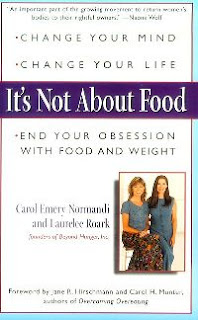>I’m reading a wonderful novel right now, Sing Them Home by Stephanie Kallos. I picked it up because I loved Kallos’ first novel,  Broken For You. Like her first book, this one is a work of true literary fiction, which means it’s not a “quick read,” or at least not for a slow reader like me. I find myself re-reading sentences, just to relish the craft of her art. But I think I would be drawn to her work even if it clipped along at a rate more akin to commercial fiction, because she continues to chose subjects and craft characters that fascinate me. And that I can relate to.
Broken For You. Like her first book, this one is a work of true literary fiction, which means it’s not a “quick read,” or at least not for a slow reader like me. I find myself re-reading sentences, just to relish the craft of her art. But I think I would be drawn to her work even if it clipped along at a rate more akin to commercial fiction, because she continues to chose subjects and craft characters that fascinate me. And that I can relate to.
Like Larken, the oldest of the three Jones children, whose mother, Hope, disappeared in a tornado in Emlyn Springs, Nebraska, in 1978. Larken is a history professor, who didn’t get parented well in her childhood, which results in her obsession with food and appearance. If you’ve been following my blog, you know my mother didn’t disappear in a tornado when I was a child. But for reasons of her own, she wasn’t able to parent me in a healthy way, or to make up for the emotional absence of my father.
“Larken makes a show of readjusting herself, rotating and leaning her body slightly so that she can dangle her arm into the bottom-right desk drawer, within range of the peanut butter cups; she brings her left hand to the front of her face, forming a kind of low-hanging awning over her mouth. While Misty regurgitates a predictable barrage of generalist postfeminist slop she’s undoubtedly plagiarized, Larken delicately fingers the peanut butter cups out of their wrappers…. And palms the first peanut butter cup and, with one flowing movement, bring it to her mouth. She leans on her hands now and lets the candy warm and soften, enjoying the way the delicately corrugated ridges on the side of the peanut butter cup contrast with its smooth top and bottom….”
This is either brilliant writing or the words of someone familiar with eating disorders, or both. And Kallos shows equal skill in describing her character’s obsession with clothing and skill with camouflaging her 5’2”175-pound frame:
“Larken always dresses in dark colors; today she wears loose black silk slacks and a maroon rayon shirt with its bottom three buttons undone. Her clothes are nice enough—she orders them online from Lane Bryant—but she spends most of her personal wardrobe and grooming budget on head and feet: salon haircuts, designer makeup, jewelry and scarves, expensive shoes.”
This and other passages about her practiced skills in dressing to hide her hefty size really hit home to me. And also this one:
“The air outside hits her like a boiler room blast. Instantly, she begins to sweat. Her thighs chafe together as she crosses the commons.”
And then the kicker—the beginning of revelations about the source of her body image problems:
“She thinks of her parents, of a conversational exchange she heard numerous times when she was growing up:
What a shame! Hope would say, sotto voice, as she often did when they passed a fat stranger. She has such a pretty face.
Pretty face, my ass, Larken hears her father counter scornfully. Pretty is pretty, Hope. Fat is fat.”
This description of Larken’s preparation for a social gathering she’s nervous about speaks volumes:
“She is stunningly accessorized: A beaded burgundy velveteen shawl is draped over her shoulders and she wears new earrings….Larken has spent the past two hours purchasing this confidence and satiety at a cost of just over $300…. These purchases are necessities. They’ve made it possible for her to survive the imminent hell of a university mandated schmooze.”
I’m only 2/3 through the book, and I won’t ruin it by telling you the story line, but instead I’ll jump to the other book on my bedside table, which isn’t a novel.
 It’s Not About Food: Change Y our Mind, Change Your Life, End Your Obsession with Food and Weight by Carol Emery Normandi and Laurelee Roark, founders of Beyond Hunger, Inc. The book is ten years old, but I just discovered it (a friend shared it with me) recently, and if Larken Jones was a real person instead of a character in a novel I’d send it to her!
It’s Not About Food: Change Y our Mind, Change Your Life, End Your Obsession with Food and Weight by Carol Emery Normandi and Laurelee Roark, founders of Beyond Hunger, Inc. The book is ten years old, but I just discovered it (a friend shared it with me) recently, and if Larken Jones was a real person instead of a character in a novel I’d send it to her!
I’ve read countless books about dieting, eating disorders, addictions, etc., and some have even helped me understand why I have these issues, but none have actually shown a way to heal them. I’m not saying this is a quick-fix, or even a complete fix, but there are definitely some truths and exercises that are helping me at the moment I am stressed and therefore tempted to use overeating or overdrinking or other addictive behaviors to numb the pain. I’ve even been able to just let myself feel the pain, “be present with it,” and then choose healthier ways to soothe myself. Not always—I still use food and alcohol, but I’m hopeful that spending more time with the exercises and principles in the book will continue to help me. Here are few teasers from the book for those who might be considering reading it. Just read each one, and think about it for a few minutes. If it touches you, read the next one, and so on:
“Food and fat are not killing us, the obsession to control them is.”
“We believe that all of us who struggle with weight and food issues, whether it be anorexia, bulimia, or compulsive overeating, are strong, sensitive women who are mirroring these cultural wounds back to society and sending the message through our bodies that we cannot and will not take it any more.”
“Women who are struggling with weight and food issues stand at the threshold of an emerging new vision of what it means to be a woman in the twenty-first century. And as long as the issue of weight is treated as purely a behavioral issue, isolated from the cultural and spiritual oppression of women, it will never be healed and our society will never evolve from this dysfunctional place.”
“In order to stop using food or controlling food as a way to avoid uncomfortable or painful feelings, you need to take time to develop compassion for why you needed to escape those feelings in the first place. If you were not taught, early on, to trust and stay with your feelings, if you were never supported in accepting them and going through them, there’s no way you could know how.”
“We’ve found in our own experiences, and in the experiences of women in our groups, that much of the pain underneath our eating disorders is linked to emotional needs that weren’t met when we were children. This is understandable since it is impossible for a parent to meet every emotional need a child experiences. However, as adults we can learn to meet our own needs and be our own parents. This is extremely important in recovery, because we use food not only to stuff down our feelings but also to take care of ourselves emotionally (e.g., calming ourselves or controlling situations). When we can take care of ourselves through reparenting, then we can let go of the food.”
I didn’t start writing this post to be so much about this journey I’m on to reclaim my body, and my life, but I’ve been struck by the common ground I’ve discovered between the characters in a fiction novel and the stories of real women who are changing their lives through the wisdom of women like Carol Normandi and Laurelee Roark. If none of this interests you, check back with me in a few days and I’ll probably be writing about something completely different!
Or even now, actually. Tonight with dinner my husband and I decided to open a bottle of wine that our oldest son, Jon, gave us for Christmas. Jon has much more refined taste in wine than we have, and he loves to introduce us to new wines. Tonight we chose a bottle of “Sin Zin” 2006 Alexander Valley Zinfandel from California. The bottle is intriguing, and Zinfandel from this valley has been described as “a bright, expressive nose, bursting with red fruits and crushed black pepper and a palate loaded with rasberries, strawberries and black pepper.” I couldn’t have written that description myself, but the wine sure was delicious.
What brought Jon and his wine to mind tonight was a sobering phone call from him earlier today. Evidently two Kiowa helicopters went down in Iraq today, killing all four pilots on board. They were with a group stationed in New York, where Jon used to be before transferring to the unit stationed in Savannah. Jon hasn’t been able to find out who they were yet, but whether they were acquaintances or close friends from his old unit—either way—the grief is great. He asked for his dad and I to keep them in our thoughts and prayers. So tonight as we gave thanks for our meal, we offered a prayer for these men whose lives have been lost in the service of our country, for healing of our son’s grief, and for his protection as he continues his work as an army helicopter pilot. He’ll be deployed again later this year, and we’ll be listening, again, to every news cast. But tonight we raised our glasses in a toast to Jon, and gave thanks for his safety… and for a very fine bottle of wine.
1 thought on “>It’s Not About Food”
Comments are closed.